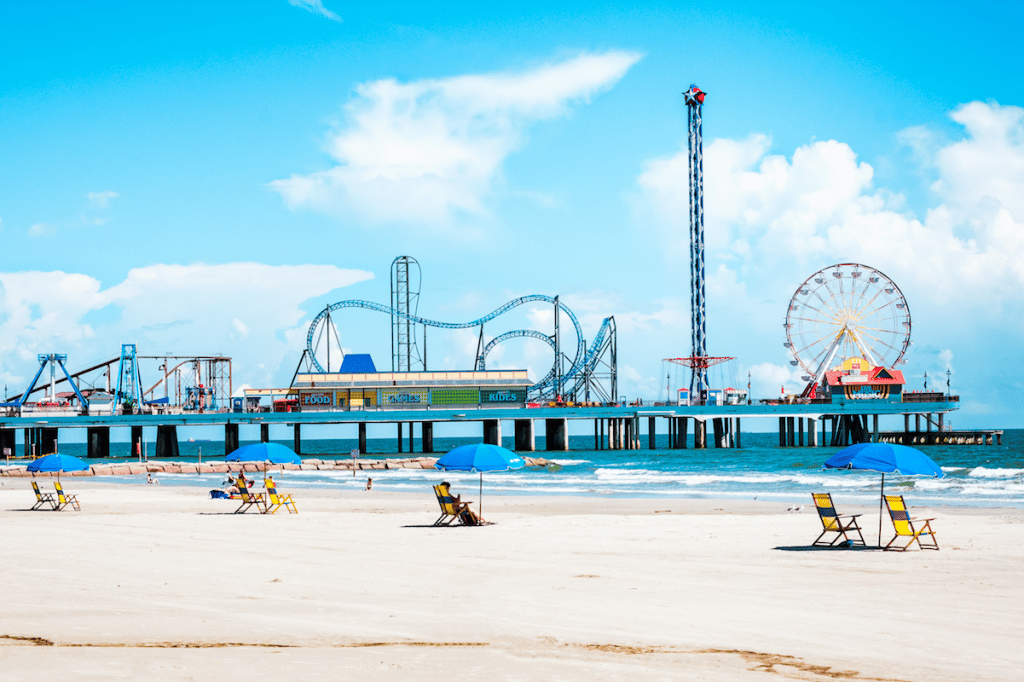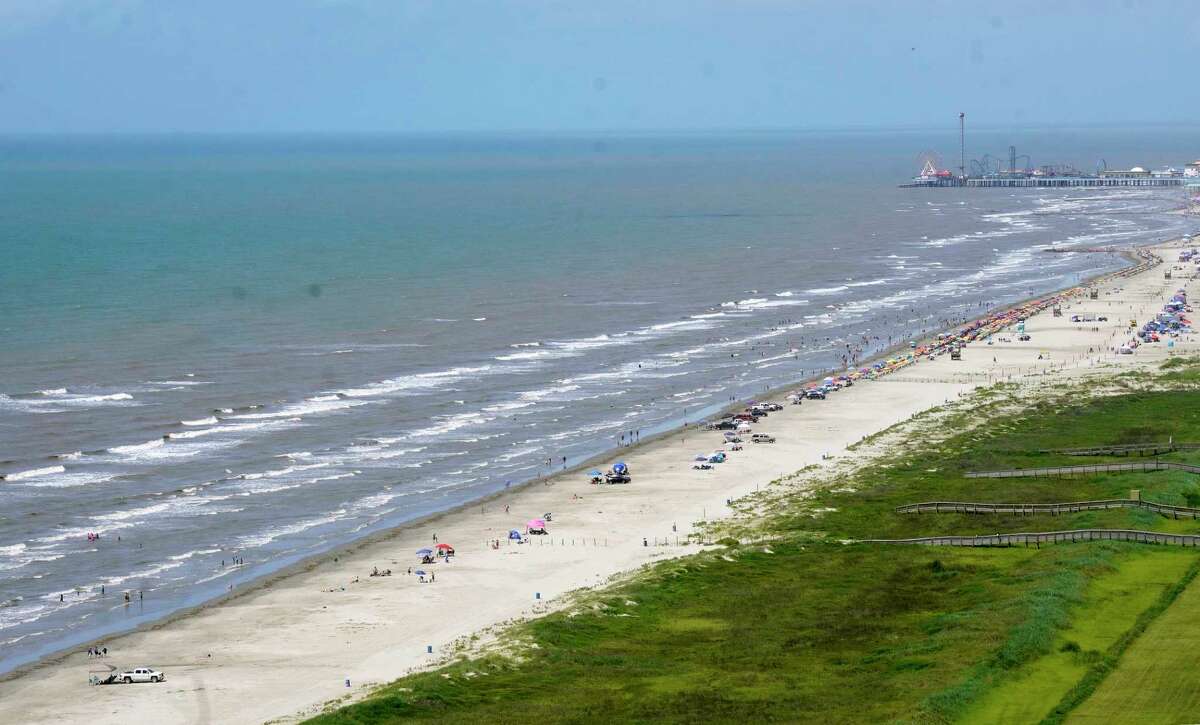Have you ever stepped onto Galveston Beach and wondered why the water looks more like a cup of tea than a crystal-clear ocean? Well, buckle up, because we're about to dive deep into the science behind this intriguing phenomenon. The brownish hue of Galveston's waters isn't just a random occurrence—it's a fascinating blend of nature's processes that make this beach unique. So, let's get started and uncover the secrets of Galveston's mysterious water!
Picture this: you're walking along the sandy shores of Galveston, enjoying the salty breeze, when suddenly you notice something odd. The water has a distinct brown tint to it, and you can't help but wonder what's going on. Is it pollution? Is it natural? Or is it something else entirely? Fear not, because we're here to break it all down for you.
Before we dive into the details, it's important to note that the color of Galveston's water isn't something to worry about. In fact, it's a natural occurrence that has been happening for centuries. So, if you've ever been curious about why Galveston Beach water is brown, you're in the right place. Let's unravel this mystery together!
Understanding the Basics: What Makes Galveston's Water Brown?
Let's start with the basics. The brownish color of Galveston's water is primarily due to a combination of factors, including sediment, tannins, and freshwater input. These elements work together to create the unique appearance that sets Galveston apart from other beaches. But what exactly are these factors, and how do they contribute to the water's color?
Sediment: The Primary Culprit
Sediment plays a significant role in the coloration of Galveston's water. When rivers like the Trinity and San Jacinto flow into the Gulf of Mexico, they carry with them tiny particles of dirt, clay, and organic material. These particles remain suspended in the water, giving it a brownish hue. It's like stirring a cup of coffee with a spoon—you can see the grounds swirling around, right? That's pretty much what's happening here, but on a much larger scale.
Tannins: Nature's Tea Bags
Another key player in the brown water equation is tannins. These natural compounds are released when organic matter, such as leaves and twigs, decomposes in the water. Think of it as nature's version of steeping tea bags. The tannins give the water a darker, tea-like color, which contributes to the overall brownish tint. It's a completely natural process, and it's one of the reasons why Galveston's water has that distinct appearance.
Factors Influencing Galveston's Water Color
Now that we've covered the basics, let's dive deeper into the factors that influence the color of Galveston's water. From weather patterns to human activity, there are several elements at play here. Understanding these factors can help us appreciate the complexity of this natural phenomenon.
Weather and Tides
Weather conditions and tides can significantly impact the color of Galveston's water. During storms or heavy rainfall, rivers and creeks overflow, carrying more sediment and organic material into the Gulf. This increased influx of particles can intensify the brownish hue of the water. Similarly, strong tides can stir up sediment from the ocean floor, further contributing to the water's color.
Freshwater Input
Freshwater from rivers and streams is another major factor. As mentioned earlier, rivers like the Trinity and San Jacinto carry sediment and tannins into the Gulf, affecting the water's color. The amount of freshwater input can vary depending on seasonal rainfall and other environmental factors, which means the water's color can change over time.
Is Galveston's Brown Water Safe?
This is a question that many visitors to Galveston Beach have on their minds. Is the brown water safe for swimming and other water activities? The short answer is yes. The brownish color is primarily due to natural processes, and it doesn't pose a health risk to humans. However, it's always a good idea to check local advisories and water quality reports before heading out to the beach.
Water Quality Monitoring
Gulf Coast states, including Texas, have robust water quality monitoring programs in place. These programs regularly test the water for harmful bacteria and other contaminants, ensuring that it's safe for recreational use. So, while the water may look a bit different, you can rest assured that it's being closely monitored to protect public health.
Common Misconceptions
There are several misconceptions about Galveston's brown water that we need to address. Some people assume that the color indicates pollution, but as we've discussed, it's primarily a natural occurrence. Others believe that the water is unsafe for swimming, which isn't true as long as water quality standards are met. By understanding the science behind the water's color, we can dispel these myths and appreciate Galveston's unique shoreline.
The Role of Environmental Factors
Environmental factors play a crucial role in shaping the appearance of Galveston's water. From seasonal changes to human activity, there are several elements that contribute to the water's color. Let's take a closer look at these factors and how they interact with one another.
Seasonal Variations
Seasonal variations can have a significant impact on the color of Galveston's water. During the rainy season, for example, rivers carry more sediment and organic material into the Gulf, intensifying the brownish hue. In contrast, during drier months, the water may appear clearer due to reduced freshwater input. This fluctuation is a natural part of the coastal ecosystem.
Human Activity
While the brown water is largely a natural phenomenon, human activity can also play a role. Urban runoff, agricultural practices, and industrial discharges can introduce additional particles and pollutants into the water. However, strict environmental regulations help mitigate these impacts, ensuring that Galveston's water remains safe and healthy.
Exploring the Science Behind the Color
For those of you who love a good science lesson, let's delve deeper into the science behind Galveston's water color. This section will explore the chemical and physical processes that contribute to the water's unique appearance.
Turbidity and Light Absorption
Turbidity refers to the cloudiness or haziness of water caused by suspended particles. In Galveston's case, the high turbidity is due to sediment and organic material. These particles absorb and scatter light, giving the water its brownish appearance. It's a fascinating interplay of physics and chemistry that results in the water's distinct color.
Decomposition and Organic Compounds
Decomposition of organic matter is another key factor in the water's color. As plants and other organic materials break down, they release compounds like tannins and humic acids. These compounds not only contribute to the water's color but also play a vital role in the ecosystem by providing nutrients to marine life.
How Does Galveston Compare to Other Beaches?
Now that we've explored the science behind Galveston's water color, let's compare it to other beaches around the world. While some beaches boast crystal-clear waters, others, like Galveston, have a more unique appearance. This section will highlight the differences and similarities between Galveston and other coastal destinations.
Crystal-Clear Waters vs. Brown Tides
Beaches with crystal-clear waters, such as those in the Caribbean, owe their appearance to low sediment levels and minimal freshwater input. In contrast, Galveston's water is influenced by rivers and organic material, giving it a distinct brownish hue. While the two types of water may look different, they both offer unique experiences for beachgoers.
Ecological Implications
The ecological implications of Galveston's water color are worth considering. The sediment and organic material that contribute to the water's color also provide essential nutrients to marine life. This creates a thriving ecosystem that supports a diverse range of species. In this way, Galveston's unique water color is a testament to the area's ecological richness.
Conclusion: Embracing Galveston's Unique Beauty
In conclusion, the brown water of Galveston Beach is a natural phenomenon that results from a combination of sediment, tannins, and freshwater input. While it may look different from the crystal-clear waters of other beaches, it's a vital part of the ecosystem that supports a wide variety of marine life. So, the next time you visit Galveston, embrace its unique beauty and appreciate the science behind its mysterious waters.
We encourage you to share your thoughts and experiences in the comments below. Have you ever visited Galveston Beach? What did you think of the water's color? And don't forget to check out our other articles for more fascinating insights into the world around us!
Table of Contents
- Understanding the Basics: What Makes Galveston's Water Brown?
- Sediment: The Primary Culprit
- Tannins: Nature's Tea Bags
- Factors Influencing Galveston's Water Color
- Weather and Tides
- Freshwater Input
- Is Galveston's Brown Water Safe?
- Water Quality Monitoring
- Common Misconceptions
- The Role of Environmental Factors
- Seasonal Variations
- Human Activity
- Exploring the Science Behind the Color
- Turbidity and Light Absorption
- Decomposition and Organic Compounds
- How Does Galveston Compare to Other Beaches?
- Crystal-Clear Waters vs. Brown Tides
- Ecological Implications


